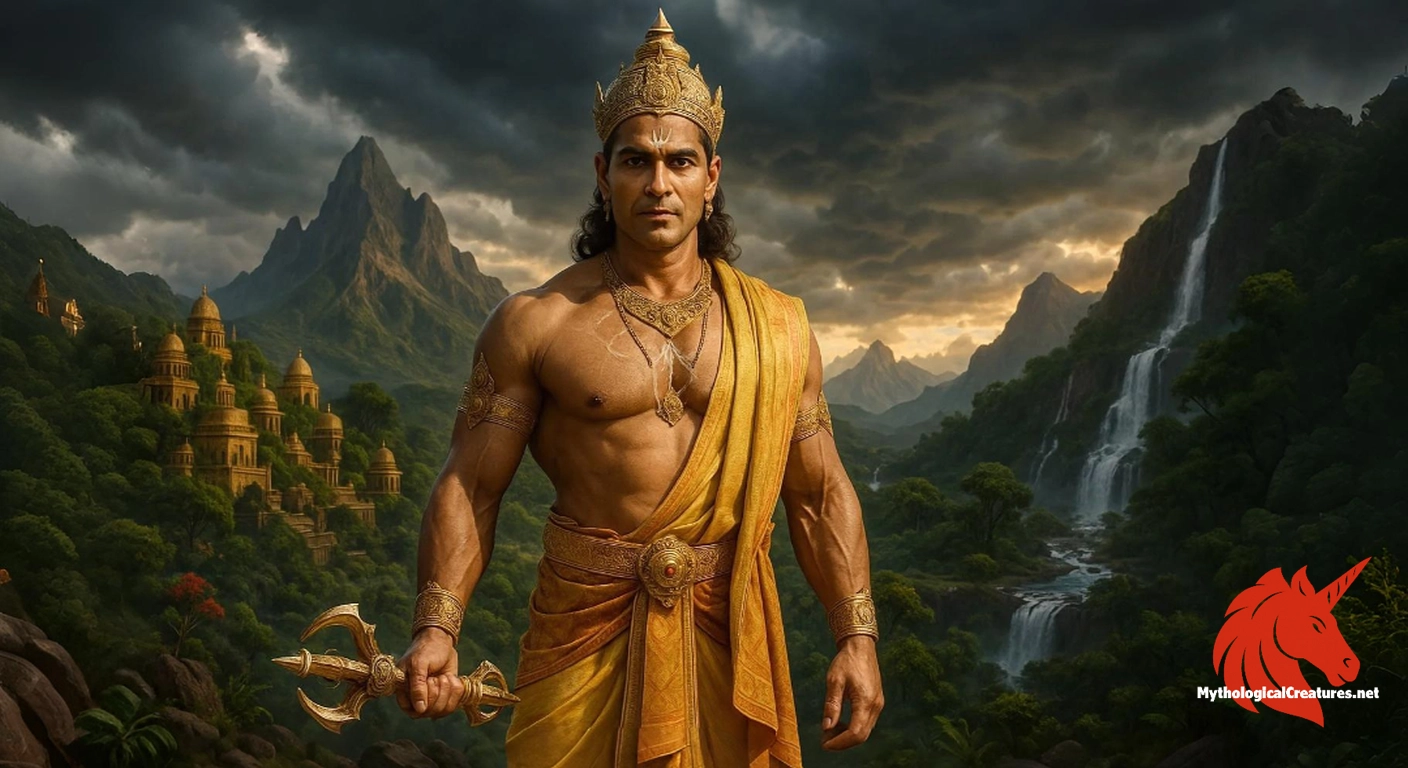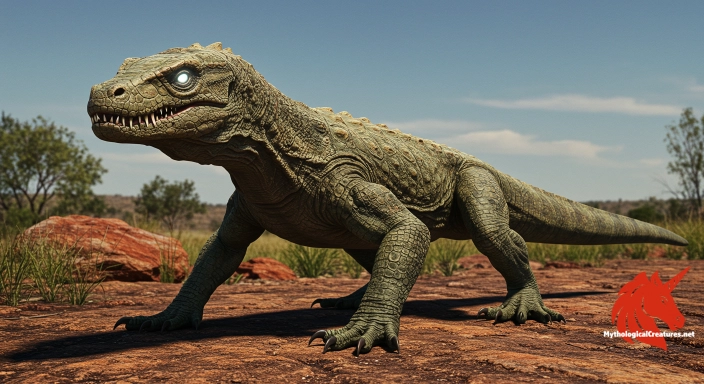Indra: Indra is the Hindu god of weather and the king of the Devas, renowned for his control over thunder, lightning, and storms.

Indra
Indra - A central deity in early Vedic literature, revered for defeating chaos to bring rain, sunshine, and prosperity to humankind.
Origins & First Encounters
Indra emerges as a formidable force in the ancient tapestry of Indian spirituality, revered as the deity of weather and the celestial monarch of the heavens. Born from the fervour of the Rigvedic hymns, his origin is steeped in the primordial celebrations of nature’s power and the cosmic order. His early mythos paints him as a vigorous protector endowed with the power to summon rain and dispel drought, thereby sustaining life and prosperity. His legendary confrontation with the asura Vritra not only marks a triumph over chaos but also symbolises the victory of light over darkness. The Vedic scriptures depict him as a vigorous and charismatic leader, whose might ensures the continuity of the natural and moral universe. Over time, his exalted status as the king of the Devas solidified his association with both martial valor and benevolent rulership. His narrative is interwoven with themes of defiance against adversity and the cyclical renewal of nature, reflecting a deeper philosophical resonance within the human experience. Indra’s multifaceted persona, representing both the tempest and the benefactor, has left an enduring imprint on the spiritual and cultural ethos of ancient India.
Source Texts & Tale Variants
The earliest and most influential accounts of Indra are found in the Rigveda, where his mighty deeds and heroic battles are celebrated in vivid, lyrical expressions. Diverse ancient scriptures, including various Puranas, continue to recount his enthralling exploits and reaffirm his prominence among the celestial hierarchy. The Vishnu Purana, for instance, presents a cyclic reinterpretation of his kingship, with a unique Indra emerging in each cosmic cycle or manvantara. Buddhist texts offer a contrasting perspective by portraying him as both a once-mighty deity and a participant in the cycle of rebirth, thereby infusing his myth with an element of human vulnerability. Jain narratives provide yet another variant, where Indra is portrayed not as the supreme heavenly ruler but as the eminent king of superhumans residing in the Svarga realm. Numerous legends elaborate on his conquest over the asura forces, each retelling adapting his heroic qualities to fit the moral and cosmological framework of the time. This rich diversity in storytelling underlines the adaptability of his narrative across different religious traditions. The comparative study of these sources reveals the dynamic evolution of his character as well as the interplay between myth and the evolving human perception of nature and divinity.
Form & Powers
Indra is consistently depicted as a strikingly dynamic figure, his physical form exuding both formidable strength and an ethereal radiance. Ancient sculptures and temple carvings reveal him as a robust, muscular deity with a commanding presence that reflects his role as the sovereign of the heavens. His visage is often adorned with a noble countenance, characterised by intense eyes that mirror his inner power and resolute determination. He is famously shown wielding the Vajra—a thunderbolt of irresistible force—underscoring his control over the natural elements. In many artistic renditions, he is depicted mounted on Airavata, the magnificent white elephant that symbolises wisdom, power, and regal authority. His attire is lavishly adorned with intricate jewellery and flowing garments that accentuate his divine status and radiant energy. The bold, dramatic lines of his depictions highlight both martial prowess and a serene majesty that captivates onlookers. Alongside these features, numerous depictions further embellish his form with subtle adornments that symbolise his connection with nature’s fury, blending aesthetics with the profound symbolism of cosmic order.
Regional Faces
The portrayal of Indra is as varied as the cultural landscapes that embrace his myth, with distinct regional adaptations reflecting local beliefs and artistic sensibilities. In the heartland of the Vedic tradition, he remains a steadfast emblem of heroic might and celestial authority, largely maintaining the original attributes found in early scriptures. Yet, in some southern traditions, his identity is intermingled with local storm deities and folk heroes, creating a synthesis of indigenous and Vedic elements. Buddhist narratives, particularly within the Pali canon, reframe his character by presenting him as a deity subject to the vicissitudes of rebirth, which adds layers of moral and spiritual introspection. In Jain cosmology, he is reinterpreted as the king of superhumans, a dignified guardian of the Svarga realm who partakes in the ceremonial celebration of spiritual milestones. These regional variants often influence the artistic depictions, where local aesthetics and ritual practices leave an unmistakable imprint on his imagery. His consort Indrani, for example, appears with nuanced differences across various traditions, highlighting the cultural specificity of each narrative. The fluidity in his portrayal serves as a testament to the adaptability of myth, revealing how core divine attributes can be reimagined through evolving regional lenses while still preserving an underlying universal significance.
Cultural Parallels
Indra’s role as the master of skies and storms finds striking parallels in other mythological traditions, creating a bridge between disparate cultural narratives. Comparable to the Greek Zeus and the Roman Jupiter, his sovereign control over thunder and lightning situates him within a broader Indo-European archetype of the sky god. Similar narratives concerning his might and authority align him with figures such as Thor, whose hammer and thunder are emblematic of divine power in Norse mythology. This shared motif of ruling the elements underscores a universal human fascination with the forces of nature and the need to personify its unpredictability. In many respects, Indra’s battles against chaos resonate with other legends where deities emerge victorious over primordial threats, forging order from tumult. His duality, as both a protector and a formidable warrior, mirrors the complex interplay between creativity and destruction found in other mythic traditions. Such cultural parallels extend to the symbolism of royalty and cosmic hierarchy, binding his story to a global tapestry of divine governance and metaphoric individuation. This interconnectedness among world mythologies enables a richer comparative analysis, deepening the understanding of how ancient societies interpreted the mysteries of nature and divinity.
Legacy & Modern Evolution
The evolution of Indra’s myth mirrors the broader shifts in spiritual thought and cultural practice from ancient times through to the modern era. Initially celebrated as the ultimate warrior and sovereign of the heavens in the Vedic texts, his persona has undergone significant reinterpretation as the narratives of later eras emerged. With the proliferation of new religious ideas and the gradual ascendancy of other deities, Indra’s role transformed from one of unrivalled dominance to a more nuanced figure, often depicted with shades of human frailty and introspection. His story has been re-examined in contemporary literature, art, and film, where his ancient exploits serve as metaphors for human struggles over chaos and order. Modern reinterpretations tend to explore both his formidable presence and his subtle vulnerabilities, reflecting an increased interest in the complex interplay between myth and human experience. His enduring image continues to influence cultural expressions—ranging from classical dance and theatre to the digital art of the modern world—thus reinforcing his timeless appeal. Festivals and cultural programmes periodically revive his tales, ensuring that his story remains a vibrant part of cultural heritage. Indra’s legacy, therefore, is a living narrative that bridges ancient cosmic ideals with contemporary quests for meaning and artistic expression.
Interesting Fact
Indra’s multifaceted portrayal across Hindu, Buddhist, and Jain traditions highlights the evolving nature of mythological figures, transforming from a mighty warrior god in the Vedic era to a more nuanced deity in later cultural narratives.
Quick Creature Info
Features:
Associations:
Our Mythic Legendary Rating:

Habitat:
Supernatural Powers:
Physical Attributes:
Abilities:
Behavior:
Lore:
References
Discover Another Mythical Legend You May Not Have Heard Of?
Uncover the mysteries of ancient folklore and expand your knowledge of legendary beings from cultures around the world.
Dare to Meet the Mungoon-Gali....
Mythical Disclaimer: The images and data on this site are derived from various historical and literary sources, but we have found that many myths often have multiple versions and interpretations across references, sometimes contradictory. As a result, these creature depictions are artistic interpretations—imaginative blends of folklore, legend, and a dash of AI guesswork. Because creature descriptions vary widely, our illustrations and accompanying information represent our best effort to honor mythology while bridging creative gaps. Enjoy these interpretations—just remember, we've done our best to respect the stories and validate available data, but in the realm of mythology, details often shift, imagination leads the way, and nothing is ever set in stone!
Curated by the Mythological Creatures Team (rev. May 2025)
